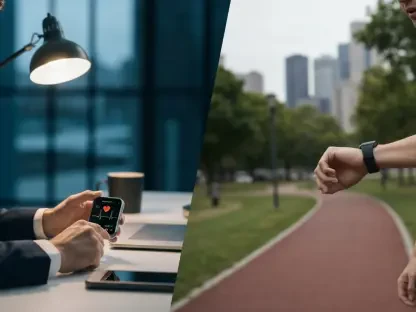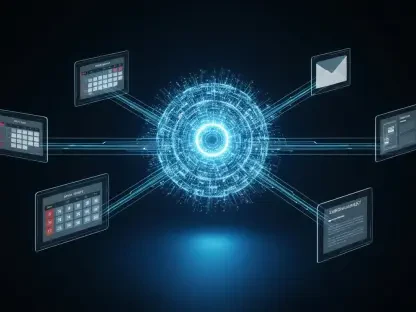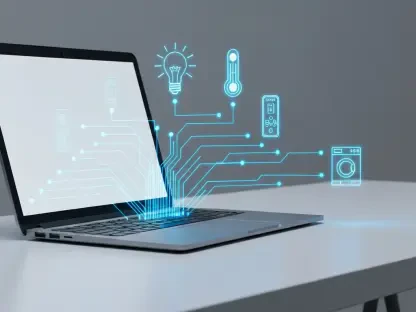Listen to the Article
Online or mobile banking activities have become increasingly popular over the years. Approximately 77% of American consumers prefer to manage their finances through mobile accounts or a computer, making the majority susceptible to cyberattacks. As the adoption rate of internet transactions increases, so does the tech-savvy nature of digital threats.
Cybercriminals are more sophisticated in their invasion methods, even using deepfakes and other AI tools to bypass security and pass off as clients within the banking industry. Now more than ever, institutions face the challenge to protect online transactions against biometric hacking. This article explores different mobile vulnerabilities and the protective measures banks can use to stay secure.
The Implications of Biometric Hacking and Other Cyberthreats on Banking Apps
Cybercriminals exploit vulnerabilities in authentication systems by using biometric hacking to attain unauthorized access to sensitive data and personal accounts. As fintech platforms depend on systems such as fingerprint scans, facial recognition, and voice processing, hackers learn the use patterns to manipulate them successfully.
Biometric vulnerabilities jeopardize the integrity of banking apps by exposing users to fraud, identity theft, monetary loss, and other costly breaches. Cybersecurity failures not only impact users but also put financial institutions in a vulnerable position. When hackers intercept communications, it raises regulatory and compliance risks for businesses.
The inability to protect data has legal, financial, and reputational implications, which can lead to hefty penalties and loss of customer trust. This amplifies the detrimental profit implications that breaches can have on bank organizations and their clients when systems are left vulnerable to cyberattacks.
Beyond biometric hacking, banking apps face other cyberthreats that include:
Malicious breaches: Security incidents in which criminals intentionally weaponize confidential information by leaking or exposing it are malicious breaches. Typically, after gaining access to sensitive data, hackers retrieve it and sell the stolen information on the dark web. Malicious actors can also leverage information to commit identity fraud.
Man-in-the-middle attacks: Cybercriminals can monitor or intercept communication between two parties to manipulate transactions and information to their advantage. Man-in-the-middle attacks involve disrupting authentication processes during transmission to gain unauthorized access, which causes operational disruptions and compromises user accounts.
Spoofing attacks: These occur when hackers disguise their identity to deceive a user. They often impersonate a trusted source, including emails and phone numbers, to bypass security measures. In spoofing, malicious actors can use high-resolution images and fake fingerprints to circumvent authentication systems and gain access.
Malware exploits: Hackers take advantage of software vulnerabilities, using code to install malware and gain unauthorized access. This cyberattack enables criminals to capture user credentials without them knowing that their mobile banking apps are compromised.
Deepfakes: Malicious actors use advanced AI to create hyperrealistic biometric deepfakes, including facial and voice cloning, to bypass protective verification processes by presenting as the authentic user. Deepfakes enable significant misinformation and defamation, leading to major financial loss. Research by the Deloitte Center for Financial Services anticipates a surge in deepfake fraud, which will result in a loss of $23 billion by 2030.
Steps to Strengthen Internet Banking and Protect User Data
As hacker techniques improve, application creators must take the necessary steps to strengthen their security systems and protect client information. By improving protective measures, banks can minimize the risk of breaches and ensure a seamless customer experience.
End-to-End Encryption
While using strong encryption to secure biometric information protects users from fraud and identity theft, it also creates centralized storage systems that are easier for hackers to exploit. It is important that mobile app developers adopt decentralized solutions to minimize the risk of breaches by properly distributing details across secure networks.
Blockchain technology is an effective way to decentralize data. Developers can use this tool to maximize transparency and immutability, which makes it harder to compromise user information. Using blockchain keeps credentials safe and under the authorized user’s control, eliminating the need for third-party management. This technology reinforces customer trust while minimizing the risk of biometric hacking.
Combine Protective Approaches
It is not wise for banking apps to rely on biometric authentication alone; doing so leaves systems vulnerable to hackers. Developers should create a more robust protection framework by implementing multilayered security measures, including passwords, PINs, and keystroke dynamics.
The banking sector can further reduce cyber intrusions by enforcing multifactor authentication for remote access to privileged and administrative accounts across platforms. An extra layer of security increases the difficulty for malicious actors looking to exploit data, which enhances the integrity of transactions.
Conduct Frequent Software Updates
Regular software updates fix security flaws in operating systems and applications, preventing emerging attacks. Without system updates, outdated software offers an opportunity for biometric hacking attempts to succeed, as cybercriminals constantly adapt their tactics.
Banks can incorporate AI-powered anomaly detection solutions to add another layer of protection to their systems. Smart technology can immediately trigger devices to block unauthorized access from unauthorized mobiles or unfamiliar user patterns. Instead of manually checking for irregularities, AI detection provides real-time data that operators can use to identify unusual login behaviors. Noticing suspicious activities gives banks time to intervene and conduct quick updates to strengthen their systems.
Prevent Spoofing and Deepfakes With Liveness Detection Technology
Liveness detection is commonly used to detect spoofing and deepfake activities. It is a way for banks to differentiate between authentic and fake human features. This advanced solution uses 3D scanning techniques to process data, examine depth, and analyze movement, along with other subtle behaviors to verify authenticity.
Using liveness detection makes banking applications and systems more efficient by identifying malicious attempts to bypass biometrics with fake images or deepfake technology. AI-driven detection continuously learns from real-world engagements to become more effective at identifying fraudulent acts. Spoofing and deepfake prevention enables an enjoyable, secure user experience.
Reduce Centralized Databases
Centralized storage bases are prime targets for malicious exploitation. Organizations should avoid storing information in one location where it would be easy to retrieve, steal, or hack into. Instead, incorporate cloud storage to strengthen security for sensitive details. Diversifying locations minimizes the risk of compromised data while giving more control to institutions.
Additionally, banks can ensure that raw biometric data is not in its original form by implementing cryptographic hashing to enhance protection. This function is an algorithm that converts data of all sizes into a string of digestible bits, which is crucial for maintaining authenticity, safety, and integrity across applications. Introducing cryptographic hash functions will make it close to impossible for hackers to access, misuse, or reconstruct sensitive information.
Conclusion
Financial institutions must carry out a risk analysis to determine the necessary protections required to keep data safe. In an increasingly digital world, protecting mobile apps from biometric hacking and other cyberthreats is important. Banks can enhance their defense systems by implementing strong protective measures, including end-to-end encryption and advanced technologies like AI-driven anomaly detection.
Now is the time for banking institutions to act decisively and adopt these strategies to safeguard user data, improve customer trust, and prevent financial and reputational damage. Start assessing your current security protocols, update your systems, and invest in innovative technologies to stay ahead of cybercriminals.









